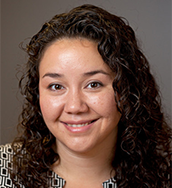Study finds 40% of treatment facilities won't accept people prescribed meds to fight opioid addiction
LAWRENCE — As American policymakers and health care providers try multiple approaches to reduce the number of deaths related to the opioid epidemic, treatment facilities are commonly recommended. But there's a major obstacle: Many facilities that serve individuals with opioid-related needs often won’t accept people who have been prescribed medications to combat the addiction.
University of Kansas researchers have written a study examining why treatment facilities decide whether to accept people on medications to fight opioid addiction and how rejections can be avoided and services streamlined.
Doctors increasingly prescribe medications such as methadone, buprenorphine and naltrexone to help individuals diagnosed with opioid use disorder, or OUD. But KU researchers found many Greater Kansas City area treatment facilities have zero or low acceptance rates for such individuals, for a wide range of reasons.
 “Forty percent of the service facilities we tracked either are not willing to serve individuals with OUD, express reservations for serving them or impose more severe monitoring and/or restrictions in order to serve them,” said Nancy Kepple, assistant professor of social welfare and lead author of the study. “Of those, they tended to focus on social services or substance use disorder services only. Facilities providing recovery support services were the most likely to have a zero to low acceptance rate.”
“Forty percent of the service facilities we tracked either are not willing to serve individuals with OUD, express reservations for serving them or impose more severe monitoring and/or restrictions in order to serve them,” said Nancy Kepple, assistant professor of social welfare and lead author of the study. “Of those, they tended to focus on social services or substance use disorder services only. Facilities providing recovery support services were the most likely to have a zero to low acceptance rate.”
Kepple and co-authors surveyed 360 area treatment facilities to determine their acceptance rates of individuals with OUD who have been prescribed medications to treat the disorder. They established four acceptance levels:
- Zero acceptance, which would not accept individuals on medications for OUD
- Low acceptance, facilities that accept these individuals with reservations/restrictions
- Moderate acceptance, in which such individuals are accepted but their medication use is not monitored onsite
- High acceptance, which accepts these individuals and administers/monitors their medication use.
 Staff at 89 of the treatment facilities provided researchers with their rationale for whether they accept individuals taking medications for OUD. There was a wide range of responses for facilities not being willing/able to accept individuals using medications for OUD, from facilities staff who said they focused on providing a drug- and alcohol-free living environment to some who said they simply did not have the infrastructure to manage medication use. The study, co-written by Amittia Parker, doctoral student in the School of Social Welfare; Susan Whitmore of First Call Alcohol/Drug Prevention & Recovery; and Michelle Comtois of First Call Alcohol/Drug Prevention & Recovery, was published in the Journal of Substance Abuse Treatment.
Staff at 89 of the treatment facilities provided researchers with their rationale for whether they accept individuals taking medications for OUD. There was a wide range of responses for facilities not being willing/able to accept individuals using medications for OUD, from facilities staff who said they focused on providing a drug- and alcohol-free living environment to some who said they simply did not have the infrastructure to manage medication use. The study, co-written by Amittia Parker, doctoral student in the School of Social Welfare; Susan Whitmore of First Call Alcohol/Drug Prevention & Recovery; and Michelle Comtois of First Call Alcohol/Drug Prevention & Recovery, was published in the Journal of Substance Abuse Treatment.
While a stigma was attached to the medications at some facilities, others simply lacked the resources to serve individuals taking the medications. Respondents at low acceptance facilities reported they had concerns about how allowance of medications of OUD might affect the therapeutic community. Others reported not having the necessary staff or funding to devote to monitoring the medication use of individuals in their care.
The study grew out of a larger partnership between KU and First Call Alcohol/Drug Prevention & Recovery to find out what services are available to people struggling with opioid addiction in the Kansas City area and to prevent others from facing addiction before the opioid crisis worsens. The findings show that increased federal funding to provide such medications to people with OUD is only addressing part of the problem, Kepple said, and that there should be greater focus on recovery and maintaining life free from addiction, not simply stopping the addiction.
“Policymakers should think about funding services across the spectrum of recovery service, not just funding access to medications to address the opioid epidemic,” Kepple said. “We need to rethink what we prioritize in funding and think about how to more effectively address providers’ fears and beliefs about these medications. If you prescribe someone these medications but don’t provide other services, they could still overdose six months down the road. These medications alone are not a magic bullet; the most effective treatment includes complementary recovery-oriented and recovery support services.”
Individuals who receive medications but do not have access to safe housing or mental health services may be more likely to relapse on opioids, the authors argue. The reasons facilities gave for not accepting individuals on OUD medications are addressable, however, and provide an opportunity for funders and policymakers to help improve collaboration between facilities that build a more supportive service infrastructure, such as connecting stand-alone SUD services providers with local psychiatrists approved to administer and monitor the medications.
“These are all facility-level factors that can be addressed and that could increase services for individuals who are increasingly prescribed these medications,” Kepple said. “Medications for OUD are not going away, so improved understanding and tangible supports would help.”
The authors point out federal funding to provide prescriptions to fight OUD has increased in recent years, as fatalities from the opioid epidemic continue to mount. Ensuring recovery past breaking the addiction and fighting stigma of the medications is key.
“Recovery is not only about sobriety,” Kepple said. “These medications help individuals to stop using opioids and initially maintain recovery. However, to best serve these individuals, we need to have a more holistic view of the entire recovery process.”
Photo credit: WikiMedia Commons. Opioid OxyContin is shown in pill and cut up powder form.